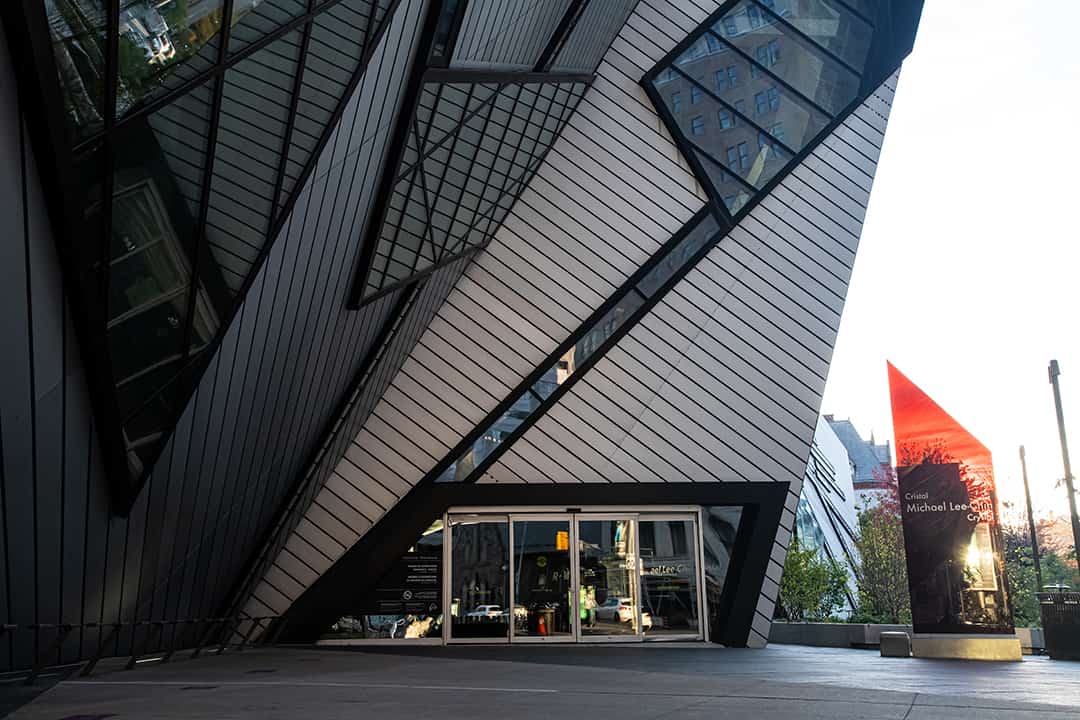For me, the Royal Ontario Museum (ROM) has always been associated with a sense of marvel. From its somewhat anachronistic architecture to the tall ceilings occupied by dinosaur bones, I get excited by all the possibilities of learning found within its walls.
I’ve always been interested in museums. I visited this institution during my elementary and secondary school years, and recently, in my first year at U of T for its Bloodsuckers: Legends to Leeches exhibition.
It doesn’t come as a surprise that the ROM boasts an immense collection of artifacts. According to its website, the museum houses a collection of “13 million artworks, cultural objects, and natural history specimens.”
During my visits, I often find myself gravitating toward the Middle Eastern and African collections. In the hushed silence of the museum, I contemplate the figures of the great and the objects of the common people of the time.
Being an Italian-born West African person, and thus a member of the West African diaspora, my eyes light up when I see traditional African garments on display at the ROM. In the small infographics, I learn a little bit more about my people and start contextualizing some of the stories my parents tell me.
Being torn between how my multiple nationalities should coexist, I’m often on the quest to discover what being a ‘true’ African means, despite never having been back home for an extensive period of time.
Most of the time, my quest for truth carries an additional burden as all my sources of knowledge are inherently Westernized — including the ROM. With these thoughts come an internal overload of questions: Am I getting a fetishized version of what these practices were like? Am I getting a diluted version? By extension, where do these artifacts come from and how were they obtained?
These are not easy questions to answer. A lot of museums across the world don’t actually have a definitive answer to questions about the provenance and the origin of some of their artifacts.
In John Merryman’s book Thinking about the Elgin Marbles: Critical Essays on Cultural Property, Art, he writes that “85-90% of Classical and certain other types of artifacts on the market do not have a documented provenance.” The late Stanford law professor adds that some of them could have also been acquired through looting.
Understanding the history of the ROM is important in this discussion. The ROM was primarily founded by Sir Byron Edmund Walker and Charles Trick Currelly. According to The Museum Makers: The Story of the Royal Ontario Museum, the ROM’s artifacts include archaeological dinosaur bones and goods from Palestine, Syria, and Turkey.
It’s thus a no-brainer that some articles in the ROM could be byproducts of colonialism and imperialism.
During recent years, there have been multiple debates surrounding whether or not museums should repatriate certain items. This has introduced the call to decolonize museums. Though the meaning of decolonization in museums has fluctuated in definition and interpretation, it is understood as “a process that institutions undergo to expand the perspectives they portray beyond those of the dominant cultural group, particularly white colonizers,” according to The Washington Post.
Some museums have taken this opportunity to engage in dialogue with marginalized communities. Others have decided to highlight Indigenous history by reorienting their exhibition structures. Still others have decided to approach the task by decentralizing European thought to make way for diverse ways of thinking.
Over the years, the ROM has taken steps to decolonize when it comes to its Indigenous relations. It curated the exhibition Anishinaabeg: Art & Power, which, according to the ROM website, explored the “traditions, and sacred stories of the Anishinaabeg as told through their powerful art over the last two centuries.” Moreover, it has also been involved in talks surrounding decolonization with Indigenous peoples.
Museums that replicate colonial dynamics have lasting implications for those who choose to attend such institutions to learn about cultures around the world. Not only are we receiving knowledge through a Eurocentric lens, but we are also missing the authentic stories that come from diverse communities and peoples. Moreover, this can lead to a metaphysical dilemma for members of the diaspora whose articles are shown off in a Western light.
Museums, and to some extent our educational institutions, are therefore in dire need of decolonization, but are moving in the right direction.


